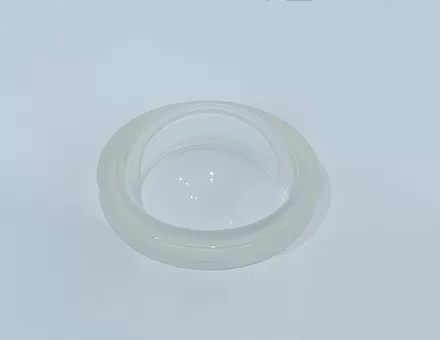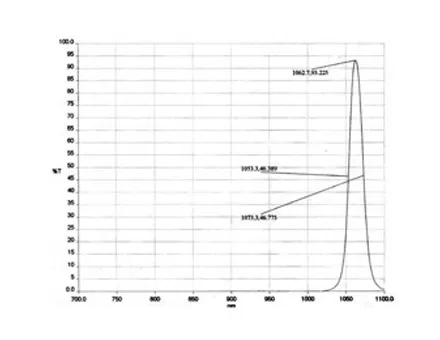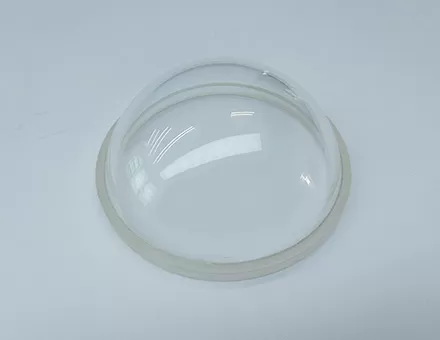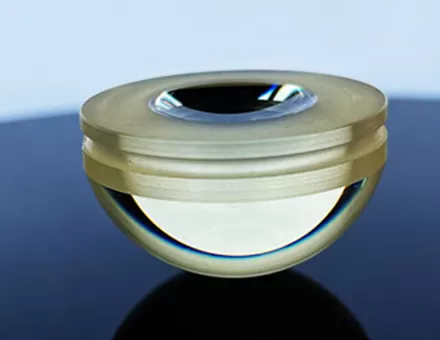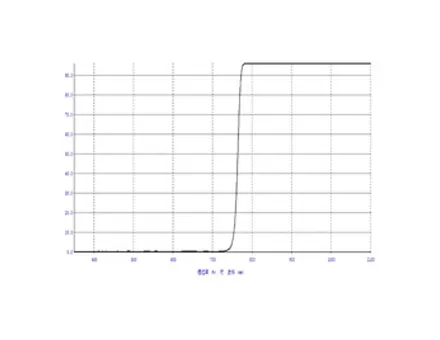Prisms are usually cut and ground from a solid piece of glass, and then coated with reflective materials on all surfaces except for the two that connect to the focusing screen and viewfinder. This creates a mirror reflection within the prism. As a reflex system for single-lens reflex cameras, penta prisms correct the upside-down image seen on the focusing screen, allowing the viewfinder to display a completely accurate representation of the scene being captured. This enables the user to properly compose and focus the image. When the shutter is released, the mirror flips upward allowing light to pass through the prism, which becomes opaque. In 1957, Pentax released the first camera equipped with a penta prism.
1. Roof Penta prisms
The roof penta prism is a variation of the penta prism and is commonly used in single-lens cameras. The image projected on to the camera body via the lens will be rotated 180°, and therefore the direction of the image will need to be reversed left-to-right when reflected by the plane mirror and passed through the penta prism. This is achieved by replacing one of the reflecting surfaces with a roof-type surface. The two surfaces of the replaced roof-type penta prism are perpendicular to each other, and this changes the chiral properties of the image.
2. Reasons for Using Penta prisms in Cameras
Many diagrams of single-lens reflex camera optical paths show only a side view of the penta prism, giving the impression that there are only two reflection surfaces inside the prism. However, in reality, the penta prisms used in single-lens reflex cameras should actually be called roof penta prisms, one of the various types of prisms optics. Does the camera use surface mirrors? Actually, many low-end single-lens reflex cameras still use surface mirrors instead of prisms. In fact, whether to use prisms or mirrors is also an important criterion for distinguishing between low-end models and higher-end models for many major manufacturers. So what is the difference between a mirror and a prism?
The main difference is cost, as the processing cost for prisms is higher and therefore they are only used in higher-end models, but the prism has a lower optical loss, making the viewfinder appear brighter. In the penta prism camera scheme, there are only two surfaces involved in the path of the light, entering and leaving the prism, while in the surface-mirror scheme there are at least three, which increases the loss of light. In addition, if the surface mirror is coated with a film after the mirror, the parallelism of the surface must also be considered. If the two surfaces of the mirror are not parallel, it will introduce additional aberrations, ghosts, and light loss. Thirdly, surface mirrors are separate components, whereas prisms are a solid entity, with obvious differences in accuracy and durability. A slight impact may cause the surface mirror's light path to deform, but the prism will not. Purely from the optical path, the two can indeed be mutually substituted, but in actual products, which one to use depends on a comprehensive consideration of the above factors.


















 EN
EN
